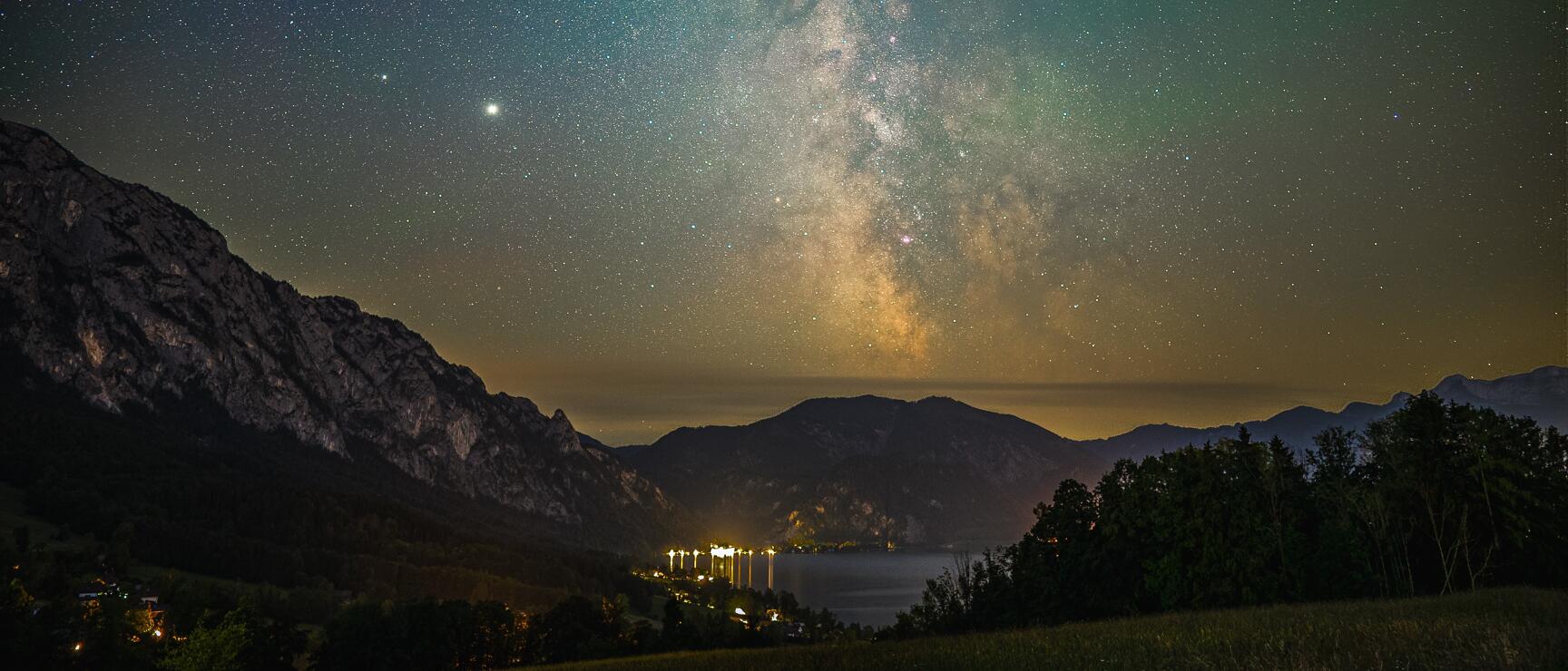
Stargazing in Austria
The best places for stargazing experiences without light pollution
Silence. The faint, invisible chirping of crickets. Crisp, clear air. Deep darkness. Above this peaceful natural scene stretches a breathtaking canopy of stars. For thousands of years, humans have gazed up in wonder, weaving stories of gods and mortals into the night sky. The mystery of the infinite cosmos—the timeless questions of where we come from, why we are here, and whether a higher power exists—has captivated us since the dawn of time. After all, Astronomy is humanity’s very first science.
Today, the magic of the stars can still be experienced—beautifully curated and accessible, not just to romantics. Special nighttime nature reserves, like the Star Park in the Salzkammergut, work to reduce light pollution. A benefit to humans, animals, and the environment alike.
In Austria's regions, there are more and more places where stargazing becomes pure enjoyment – with guided star workshops, tours and observatories. Or you can simply discover the overwhelming beauty of the night sky on your own, at numerous lookout spots and along designated hiking trails.
The most beautiful places for stargazing
Observatories with guided tours, workshops and seminars
3 questions about Austria's star parks
Austria's first star park
Attersee-Traunsee star park in the Salzkammergut region
In 2021, the Attersee-Traunsee region was certified as Austria’s first Star Park by the International Dark Sky Association.
This marks Austria's first entry into the global “Dark Sky Places” network—home to 150 Star Parks worldwide, including 35 in Europe. The goal of the project is to preserve the natural darkness of the night and reduce light pollution.
Visitors to the Star Park are treated to magnificent views of an unspoiled night sky, the Milky Way visible to the naked eye, and the enchanting magic of deep darkness.
This sustainable project not only supports biodiversity but also raises awareness of the precious value of darkness in an ever-brightening world.
When we look up at the starry sky, a beauty unfolds before us that delights and uplifts us. (…)
Adalbert Stifter (1805-1868), Austrian author
Here's what you need for stargazing in Austria
Clear, cloud-free night – ideally during a new moon.
Warm clothing and a blanket – nights in Austria’s mountains can get chilly.
A lounger or sleeping mat – for comfortable sky-watching outdoors.
Binoculars or a telescope – for an even closer look at the stars.
Red torch – to find your way in the dark without disturbing your night vision.
Hot drink & snacks – for cosy stargazing moments.
Star chart or app – helps you identify constellations and planets.
Enjoy your time under the stars!
Why darkness matters
Light pollution: Harmful to people and nature
Light pollution is the uncontrolled brightening of the night sky caused by artificial light. And it’s becoming an increasing concern. Because light pollution doesn’t just dim our view of the stars—it also has far-reaching ecological and health impacts:
Harmful to people: Exposure to light at night can suppress melatonin production—a hormone vital for restful sleep and recovery. This disruption of our natural rhythm can weaken the immune system and affect long-term health.
Harmful to wildlife: Around 70% of all mammals are active at night. Artificial lighting can change their behaviour, disrupt insect populations, and disturb the entire food chain.
Harmful to the environment: At night, artificial light can trigger photosynthesis in plants — a process normally driven by daylight. This stresses trees and vegetation, shortening their lifespan as they expend too much energy.